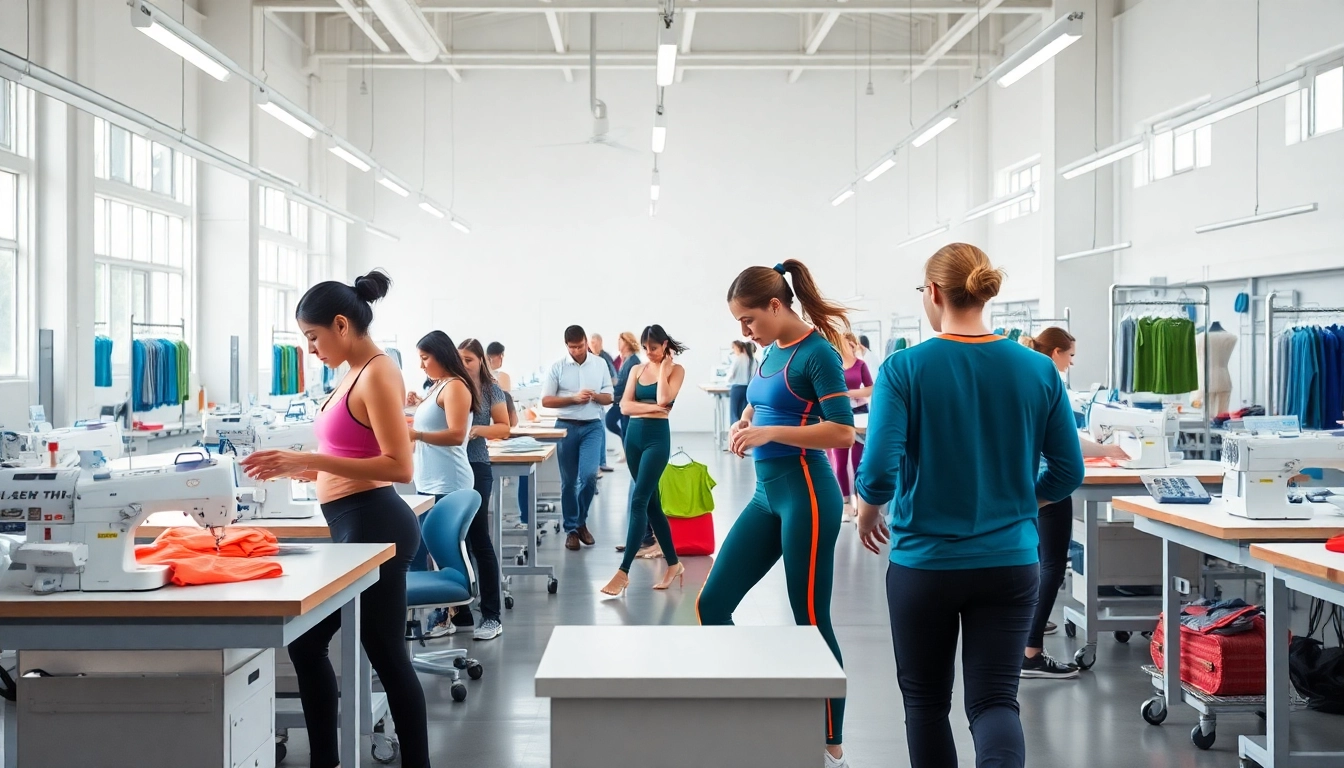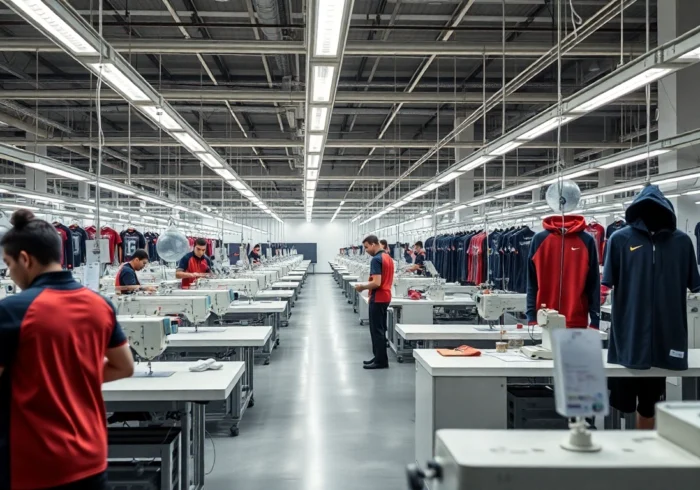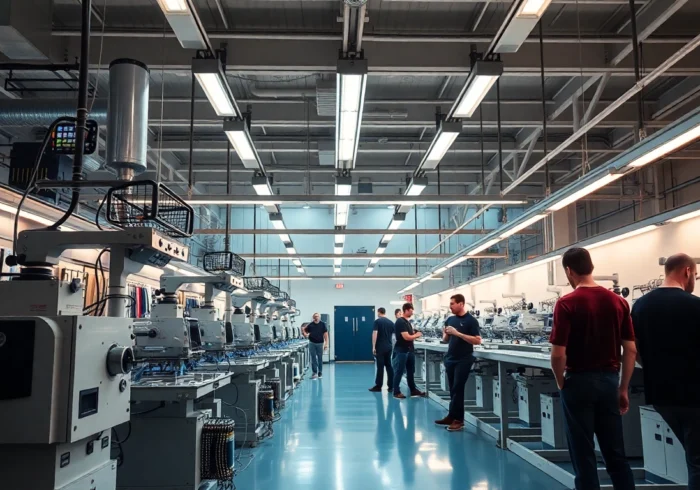Understanding the Role of a Sportswear Factory in Athletic Apparel Production
In the highly competitive world of athletic apparel, the backbone of every successful sportswear brand lies in its manufacturing partner: the sportswear factory. These factories are not merely production units; they are strategic partners that influence product quality, innovation, delivery timelines, and ultimately, brand reputation. To transform a concept into high-performance sports gear, brands must understand the core functions and standards upheld by modern sportswear factories, especially in manufacturing hubs like Pakistan, which has emerged as a global leader in textile and sports apparel production.
Defining a Sportswear Factory and Its Core Functions
A sportswear factory is a specialized manufacturing facility dedicated to the design, development, and assembly of athletic clothing and accessories. These factories perform a range of core functions, including fabric sourcing, pattern development, cutting, sewing, finishing, and quality control. They often work closely with brands to customize designs, incorporate innovative fabrics, and meet technical performance criteria such as moisture-wicking, breathability, and durability.
Furthermore, a reputable sportswear factory acts as a collaborative partner, engaging in product development cycles, suggesting fabric innovations, and optimizing manufacturing processes. They also ensure that products meet specific industry standards and certifications, such as ISO, ISO 9001, and ISO 14001, which guarantee high quality and sustainable practices, respectively.
Industry Standards, Certifications, and Quality Assurance
Adherence to industry standards and certifications is crucial for maintaining quality and consumer trust. Leading sportswear factories in Pakistan and elsewhere routinely meet or exceed standards such as ISO 9001 (Quality Management), ISO 14001 (Environmental Management), and Oeko-Tex Standard 100 (safe fabrics). These certifications demonstrate a factory’s commitment to quality, safety, and sustainability.
Quality assurance procedures include rigorous inspection at every stage—from raw material procurement to final packaging. Advanced testing methods assess fabric strength, colorfastness, stretchability, and garment durability. Implementing quality management systems reduces defects, minimizes waste, and ensures consistent output, which is vital for brand reputation, especially in performance sportswear where product failure can have serious implications.
Impacts of Factory Quality on Brand Reputation and Product Performance
The quality standards maintained by a sportswear factory directly influence the end product’s performance and the brand’s reputation. High-quality manufacturing ensures that apparel withstands intense physical activities, maintains comfort, and retains its appearance over time. Conversely, lower standards can lead to issues like fabric pilling, seams splitting, or color fading, which can damage customer trust and brand loyalty.
Brands that partner with reputable factories often find a competitive edge, as consistent quality translates into customer satisfaction, reduced returns, and positive reviews. Moreover, investment in manufacturing quality assures compliance with international sports regulations and certifications, opening avenues for global markets, including the US, Europe, and Middle East.
Choosing the Right Sportswear Factory for Your Brand
Assessing Factory Capabilities and Production Capacity
When selecting a sportswear factory, scalability is a primary consideration. Evaluate whether the facility has the technological capacity to produce your desired volume without compromising quality. Key indicators include the number of sewing lines, machinery automation, and workforce expertise. For emerging brands, a factory that offers flexible minimum order quantities (MOQs) and small batch production can facilitate market testing and brand growth.
Additionally, review the factory’s ability to handle product variety—such as different styles, fabrics, and technical features—to ensure alignment with your product line expansion plans.
Evaluating Quality Control Processes and Material Sourcing
Quality control (QC) procedures form the backbone of a reliable production relationship. Top-tier factories implement multi-tiered QC systems, including raw material inspection, in-process checks, and final product audits. Transparency in sourcing materials—preferably from reputable suppliers with traceability—prevents issues like counterfeit fabrics or non-compliance with safety standards.
Understanding the factory’s certification credentials and their partnerships with sustainable suppliers can add value to your brand, especially if eco-conscious products are part of your strategy.
Considering Location, Pricing, and Lead Times in Factory Selection
Geography plays a significant role in manufacturing logistics. Pakistan’s Sialkot region, for example, is renowned for its sportswear and textile industries, offering competitive pricing, skilled labor, and proximity to key markets. When choosing a factory, balance cost considerations with lead times and shipping efficiency. Longer lead times can delay product launches, while higher costs might restrict profitability.
Building strong, local relationships and understanding regional export regulations can streamline the manufacturing and distribution processes, helping your brand stay competitive globally.
Key Technologies and Manufacturing Practices in Modern Sportswear Factories
Advanced Machinery and Sustainable Production Methods
Modern sportswear factories leverage high-tech machinery, including computerized embroidery, flatlock stitching, and automated cutting systems. These innovations improve precision, reduce waste, and enhance productivity. Sustainability is also increasingly integrated—factories adopt water-efficient dyeing processes, recycled fabric utilization, and eco-friendly finishing techniques to meet international eco-standards.
Compliance with sustainable manufacturing practices not only reduces environmental impact but also appeals to eco-conscious consumers, giving brands a competitive differentiator.
Innovations in Fabric Technology and Customization Options
Fabric innovations such as moisture-wicking, four-way stretch, and anti-odor properties are now standard in high-performance sportswear. Modern factories work closely with textile experts to develop customized fabrics that perform under rigorous conditions, tailored to different sports or activities.
Additionally, the adoption of digital printing and embroidery allows for high-quality customization—such as team logos, personal names, or unique designs—boosting brand identity and consumer engagement.
Ensuring Durability, Comfort, and Performance through Manufacturing Techniques
Manufacturing practices focus on achieving optimal durability without sacrificing comfort. Reinforced seams, stretchable fabrics, and ergonomic designs are incorporated through precise sewing and finishing techniques. Enhanced durability extends garment lifespan, reinforcing customer trust and reducing waste.
Employing innovative techniques such as laser-cut patterns and seamless knitting further improves comfort by reducing chafing and weight, elevating the overall performance quality of sportswear products.
Building Successful Partnerships with a Sportswear Factory
Effective Communication and Clear Design Specifications
Transparent communication is fundamental. Clear, detailed design specifications—including technical drawings, fabric choices, and performance requirements—minimize misunderstandings and revisions. Utilizing digital project management tools enhances collaboration, ensuring both parties are aligned on expectations and timelines.
Negotiating Terms, MOQ, and Pricing Strategies
Negotiations should focus on obtaining flexible MOQs, competitive pricing, and favorable payment terms. While lower MOQs support startups, bulk orders often reduce per-unit costs. Establishing long-term partnerships with transparent pricing builds mutual trust and stability.
Maintaining Quality Assurance and Long-Term Collaboration
Ongoing quality audits, regular communication, and shared quality benchmarks are essential to sustain partnership excellence. Establishing trust through consistent quality, timely deliveries, and responsive communication encourages a collaborative relationship beneficial to both brand growth and manufacturing efficiency.
Industry Trends and Future Directions of Sportswear Factories
Growth of Eco-friendly and Sustainable Manufacturing
The future of sportswear manufacturing is rooted in sustainability. Factories adopt eco-friendly dyes, biodegradable fabrics, and circular production models to meet stricter environmental regulations and consumer expectations. Leading factories are investing in renewable energy sources, waste management, and resource conservation to reduce carbon footprints.
Adoption of Automation and Smart Factory Technologies
Automation and Industry 4.0 technologies are revolutionizing manufacturing. Smart sensors, robotic assembly lines, and real-time data analytics optimize operations, improve quality control, and reduce costs. These innovations enable factories to respond rapidly to market changes and customize products on a mass scale efficiently.
Expanding Global Sourcing and Responsive Supply Chains
Globalization continues to reshape sourcing strategies. Factories in Sialkot and other regions are integrating with global supply chains, emphasizing quick turnaround times, flexible order sizes, and international compliance. Digitalization of supply chain management ensures greater transparency, responsiveness, and risk mitigation—key to staying competitive in a fast-paced industry.



